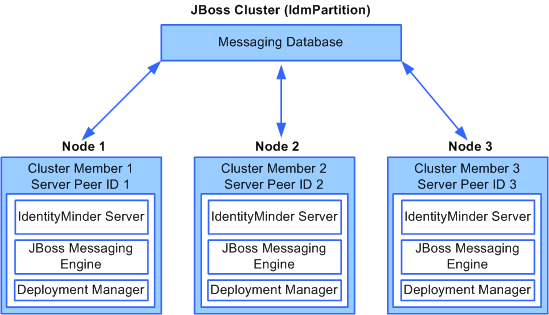

CA IdentityMinder uses the farming method of a JBoss 5 cluster. In this type of cluster, you create a master node and it is usually the node that starts first in the cluster. As other nodes start, they receive deployment files from the master node. If the master node fails, another node becomes the new master node.
Note: JBoss 6.1 EAP uses a messaging provider named HornetQ. This provider involves journal files for persistence and it is described later in this chapter.
The following JBoss 5 figure shows the relationship between the nodes and cluster members. Each node contains one cluster member. Each member of the cluster has a unique Server Peer ID. The master node would be cluster member 1, assuming it was created first.

In this figure, the messaging database is a central store for cluster members to share messages and each node contains three components:
Provides the core functionality of the product.
Provides messaging functionality for members of the cluster using JMS.
Keeps track of the cluster members and the current master node member, which is also responsible for deploying files from the master node to other nodes.
|
Copyright © 2013 CA.
All rights reserved.
|
|